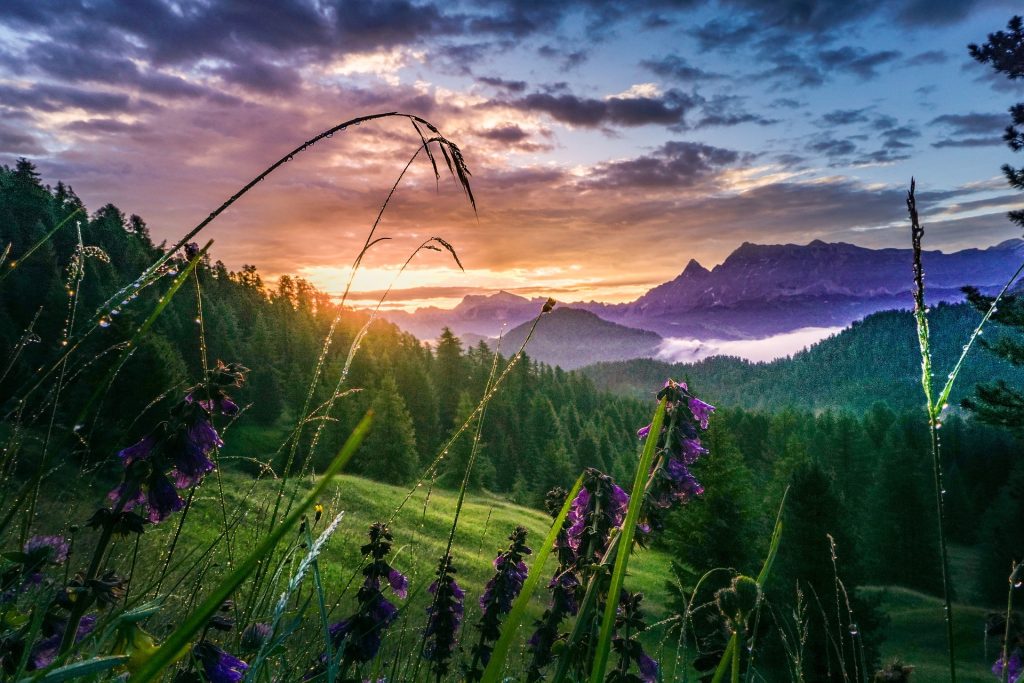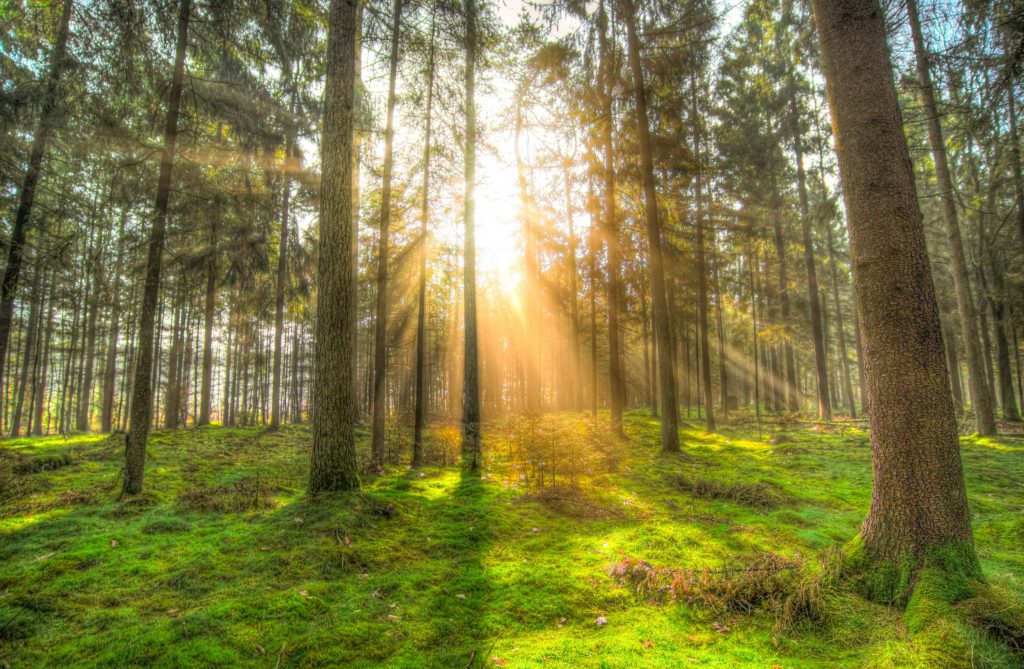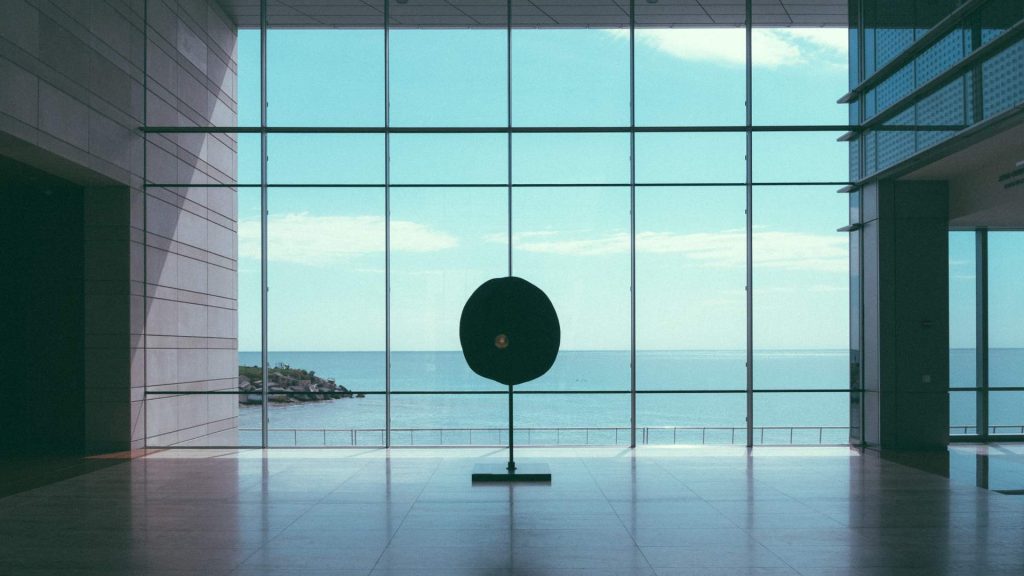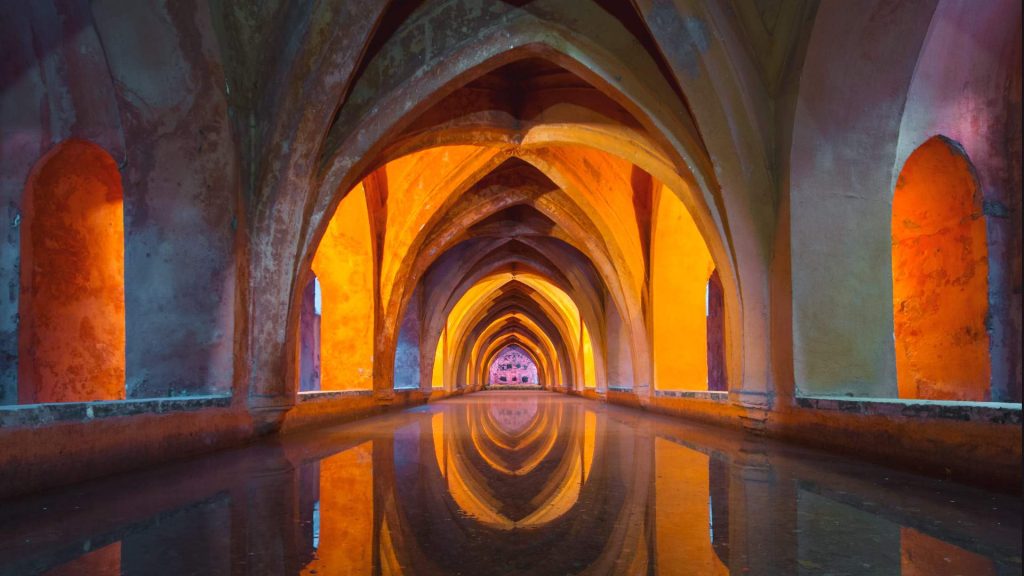The Luminary Landscape: Embracing Natural Light
An Overview of Natural Lighting in Landscaping
Every landscape, whether it be a sprawling park or an intimate backyard garden, is shaped by the play of light and shadow. One could argue that the most profound element shaping these outdoor spaces isn’t the lush greenery or the meticulously placed architectural details, but rather the natural light that breathes life into these elements.
In landscaping, natural lighting mainly refers to the luminosity provided by sunlight or moonlight. The ebb and flow of this luminary ballet can radically transform a scene, from the warm, radiant hues at sunrise to the vivid contrasts in broad daylight, then subtly transitioning into the softer, diffused glow at sunset and eventually settling into the calm serenity under moonlight.
This dynamic interplay of light not only influences our perception of colors and textures but also sets an ever-changing atmosphere that invokes different emotions at different times. A landscape bathed in morning sunlight may exude a sense of optimism and energy, while the same space under soft moonlight might stir feelings of tranquility and introspection.
Natural light also has significant implications for plant health as it powers photosynthesis – an essential process that enables plants to convert water and carbon dioxide into oxygen and glucose. Thus understanding its intricacies becomes paramount for landscapers who seek to create not just visually delightful spaces but also thriving ecosystems.
Shedding Light on Importance & Benefits
Natural lighting serves multiple purposes in landscaping – from aesthetic appeal to practical functionality. It highlights contours, enhances textures, creates depth, illuminates dark areas for safety purposes, and fosters plant growth – all while being environmentally friendly and cost-effective.
From an aesthetic perspective, it helps landscapers sculpt outdoor spaces with incredible precision. With strategic positioning of plants and garden elements, one can manipulate shadows to create a sense of depth and illusion, balance brightly lit spaces with cool shade areas, or even direct viewers’ attention towards specific focal points.
The transience of sunlight also means that a landscape changes character throughout the day, thus providing an immersive sensory experience that is both dynamic and engaging. On a functional aspect, effective use of natural light can enhance safety by lighting pathways, entrances, or steps to prevent accidents.

It can also help regulate indoor temperatures if applied in context with architectural design. For instance, deciduous trees on the southern and western sides of a building could provide shade in summer while allowing sunlight to penetrate in winter, thereby reducing energy consumption for heating or cooling. Moreover, it fosters more sustainable landscapes as it negates the need for artificial lighting during the daytime, thereby reducing carbon footprint.
Plus, there’s no denying the therapeutic benefits of spaces filled with natural light; they promote well-being by connecting us with nature’s cycles, which inadvertently aligns our biological rhythms, leading to improved sleep patterns and overall health.
In essence, optimized use of natural light forms the cornerstone for creating effective, attractive, and sustainable landscapes. Its profound impact on aesthetics combined with its fundamental role in plant health makes it essential for any landscaper’s toolkit. As we delve deeper into this luminary landscape tale, we’ll uncover how the dance between sunlight and shadow continually shapes our outdoor experiences.
Understanding Natural Light
The Science of Luminescence: Defining Natural Light
Natural light, also referred to as daylight, is the full spectrum of light that emanates from the Sun. Unlike artificial light sources, it encompasses a broad scope of electromagnetic wavelengths, from infrared to ultraviolet. This diverse range of wavelengths is what gives natural light its unique characteristics and hence its unmatched ability to render color accurately in our visual perception.
In the field of physics, natural light is classified as unpolarized. This means that it oscillates in every possible direction perpendicular to its path of travel. On the other hand, artificial lights tend to be polarized due to their confined origin point and guided directionality.
Moreover, it’s fascinating to note that every particle of sunlight travels approximately 90 million miles before reaching Earth’s surface. This travel duration allows for an interesting phenomenon known as blue sky scattering, where shorter blue and violet wavelengths are scattered more than longer red ones by our atmosphere, creating the blue hue we see on a clear day.
The Celestial Lamp: The Sun’s Role
The Sun plays a pivotal role in producing natural light; it stands as an unparalleled source whose luminosity exceeds any artificial lighting we have devised thus far. It radiates light energy across space at an intensity that can sustain life on earth and has done so for billions of years.
During sunrise and sunset, when the sun is near or below horizon level, solar rays encounter more atmospheric particles, resulting in softer hues due to increased diffraction and absorption. But at noon, when the sun reaches zenith (its highest point), it emits peak levels of direct sunlight known as ‘full sun exposure’. These midday rays can have intense lighting effects with strong shadows contrasting with bright spots upon unobstructed surfaces within a landscape.
The Daily Dance of Shadows: Light Quality and Directionality
The quality and directionality of natural light can dramatically change throughout the day, profoundly influencing the visual perception of landscapes. At dawn, when the sun is just beginning its ascent into the sky, light assumes a diffused quality as it filters through more atmospheric particles. This soft light casts long shadows that add depth and serenity to outdoor spaces.
As midday approaches, the sun climbs to its zenith, casting shorter, darker shadows as its rays strike objects directly overhead. This harsher lighting can expose every detail within a garden or park but can also intensify contrasts, making some areas too bright while plunging others into deep shadow. During the afternoon, sunlight becomes less direct again, resulting in longer shadows with softer edges.
Then, as dusk falls and twilight sets in, landscapes are bathed in an ambient glow, creating a serene atmosphere where outlines blur and colors mellow. In understanding these changes in natural light across different times of day, we can better plan for correct plant placement within gardens or strategically position architectural elements within parks for optimal visibility and aesthetic appeal.
The Kaleidoscope of Natural Lighting Techniques in Landscaping
Direct Sunlight: The Stage Manager of Landscape Aesthetics and Plant Health
As the quintessential source of natural lighting in landscaping, direct sunlight plays an influential role in both the aesthetic appeal and health of your garden. This luminous performer brings color to life, accentuating the vivid hues of flowers and leaves while casting a dramatic play of shadow and light that adds depth and dimension to the landscape.
In addition to animating the visual spectacle, direct sunlight is also crucial for plant health. It stimulates photosynthesis – a fundamental process by which plants transform light energy into chemical energy for growth. Thus, places bathed in abundant sunlight are home to thriving, verdant lawns, robust trees, and colorful blossoms.

However, like any artist who takes center stage, direct sunlight must be managed judiciously. Excessive exposure can lead to scorching heat that may wither delicate plants or bleach vibrant colors. Therefore it’s essential for landscapers or homeowners to understand their garden’s sun orientation and choose plant species accordingly, those that are acclimated either for full sun exposure or partial shade.
Furthermore, thoughtful design can mitigate some adverse effects of overexposure. For instance, large trees or architectural structures such as pergolas can provide dappled shade during peak hours while still allowing enough light penetration for photosynthesis among understory vegetation.
Last but not least is the potential interplay between direct light and artificial elements within your landscape, such as sculptures or water features. Positioning these strategically could yield stunning effects when they’re illuminated by the morning or late afternoon sun.
Indirect Light: The Conductor of Serenity
The second maestro conducting our symphony of natural light in the landscape is indirect or diffused light. This form of light is softer; it evenly envelops surfaces, diminishing harsh shadows and creating a calming, tranquil ambiance – a true conductor of serenity.
Indirect light predominantly occurs on overcast days when clouds diffuse sunlight or in shaded areas where direct sunlight does not reach. It gently illuminates a landscape, enhancing the subtle textures and tones that might be overwhelmed by the intensity of direct sun. This kind of charm lies within its ability to offer a different perspective on commonly seen landscapes.

Under its spell, gardens can transform into ethereal spaces with an almost poetic beauty – think misty mornings where each leaf appears soft and saturated with soft hues. The pivotal role indirect light plays in setting moods should not be underestimated either. Imagine a sequestered alcove nestled under trees’ canopies, bathed in this gentle glow – it invites quiet reflection, providing perfect respite from the heat and bustle of the midday sun.
Such are spaces born from understanding and harnessing indirect lighting techniques. Understanding the nuances between direct and indirect lighting can give you control over your landscape’s mood: intense and dynamic under direct sunlight or serene under diffused lighting. It’s all about balancing these two forces harmoniously to create your desired sensory experience.
Reflected Light: The Spotlight Artist
In our exploration of natural lighting techniques for landscaping, let us now turn to reflected light – an often overlooked though powerful ally in highlighting specific features within your garden landscape. Reflected light occurs when rays bounce off surfaces such as water bodies, boulders, walls – even leaves – and cast onto another surface.
This reflected lighting can spotlight particular elements or areas within your garden that you wish to draw attention to or enhance visually. For instance, a strategically placed pond can reflect the sky’s changing palette throughout the day, creating an enchanting focal point.

Similarly, glossy foliage or light-colored walls can reflect sunlight onto shadier corners, bringing these spaces alive with unexpected dapples of brilliance. In essence, reflected light offers you an artistic tool to ‘paint’ your landscape with light.
Mastering this technique involves understanding the reflective properties of various surfaces and then positioning these optimally to capture and redistribute sunlight effectively. However, it also pays to be mindful that overly intense reflections could lead to glare or hotspots that disrupt the overall visual harmony.
Gentle modulation – just like with direct sunlight – is key in using reflected light to your landscape’s advantage. Learning how to utilize these three types of natural lighting – direct sunlight, indirect or diffused light, and reflected light – each with their own unique strengths and subtleties, will greatly enhance your ability to create visually stunning landscapes that are not only beautiful but also in tune with nature’s daily rhythm.
The Harmonious Interplay of Natural Light and Landscape Elements
Creating Nature’s Canvas: The Interaction of Flora and Fauna with Natural Light
The commingling of natural light with different elements of a landscape, such as plant life, water bodies, sculptures, and structured spaces, forms a fascinating visual spectacle. Certainly, plants have developed an intimate relationship with sunlight since the dawn of time. It goes beyond the basic photosynthesis process; the angle at which sunlight hits a leaf or penetrates through the canopy can dramatically enhance or diminish the aesthetic appeal of a garden.
Consider how trees interact with light. A densely packed group of trees can create intricate dappled light patterns on the ground below. These random patches of lighting provide an element of visual interest that is hard to replicate artificially. Besides making photogenic scenes, these subtle effects can influence how we perceive space and depth within a garden.
Beyond trees and shrubs, think about flower beds bathed in morning sunlight – their vibrant hues seem even brighter under direct natural light’s influence. Each plant variety basks in and reflects light differently – glossy leaves reflect more while matte foliage absorbs it – creating layers upon layers of texture in your garden panorama.
In contrast to terrestrial elements, water bodies like ponds or fountains dance with sunlight in their unique way. Water surfaces are highly reflective; hence they act almost like mirrors that bounce around available sunlight to illuminate surrounding areas or even specific features. Moreover, depending on how it’s structured or shaped – like in birdbaths or lily ponds – water can create mesmerizing effects as it plays host to intricate interplays between shadow and light throughout the day.
The Seasons’ Symphony: How Seasons Influence Landscape Lighting
The Sun’s position in the sky, and therefore the quality, intensity, and angle of sunlight falling on your garden, changes with each passing season. This celestial choreography plays a crucial role in landscape lighting.
In summer, when the sun is high overhead during most daylight hours, landscapes are bathed in strong direct light. This results in a sharp contrast between lit areas and shadows – perfect for highlighting bold features or creating dramatic effects using architectural plants or structures.
Autumn is famous for its soft, diffused light. As the sun stays low on the horizon throughout these months, it casts long shadows that provide depth and dynamism to any landscape. This golden glow can transform even an ordinary garden into an ethereal space filled with warmth and richness.
Winter brings along short days with low-angled sunlight that creates extended shadows, offering a different sort of beauty – stark yet serene. The snow cover reflects sunlight immensely, brightening up even those landscape corners usually hidden under shade.
Spring hails regrowth and rebirth; its longer days mean more daylight hours, allowing landscapes to bask under gentle early-morning or late-afternoon sunlight for extended periods, producing visually soothing scenes brimming with promise of life anew.
The Art of Lighting: Maximizing Natural Light in Landscape Design
Strategic Placement: Choreographing Sunlight Exposure
One of the most effective ways to maximize natural light in landscape design involves the strategic placement of elements within the landscape. Engaging in this practice is akin to choreographing a dance where sunlight is your partner, and your aim is to complement its rhythm and flow.
The first step on this journey involves understanding the garden’s orientation and recognizing how sunlight traverses it throughout the day. A comprehensive assessment of your landscape’s solar exposure will allow you to determine which areas receive morning or afternoon sun, highlighting places with dappled shade or complete shade.
This knowledge forms a critical base from which you can choose appropriate plant species that are well-adapted to their designated light conditions, thus ensuring their healthy growth. Further, strategic placement extends beyond plants to include hardscape elements such as pavements, walls, or benches.
For example, a bench placed strategically can host a warm sunny spot for winter afternoons or provide cool shade during summer mornings. Similarly, using pergolas or arbors can filter harsh midday sun while creating fascinating patterns of light and shadow on walkways.
Moreover, understanding the changing angle of sunlight over seasons allows you to position plants so that they’re highlighted beautifully during specific times of year. For instance, backlighting deciduous trees with low-angled winter sun results in stunning silhouettes that bring drama to an otherwise dormant garden.
In essence, strategic placement for optimal sunlight exposure is about reading nature’s cues and responding creatively. By doing so wisely, one can craft spaces that not only look beautiful but also feel aligned with natural rhythms – making them truly pleasant spaces for people to inhabit.
Reflective Surfaces: Amplifying Beauty through Indirect Lighting
Another noteworthy way of enhancing natural light in landscape design involves the clever usage of reflective surfaces. These can act as mirrors, amplifying available light and casting it onto areas that might otherwise be overlooked. Reflective surfaces can range from bodies of water, such as ponds and fountains, to architectural elements like glass windows or polished stone walls.
Water bodies are particularly effective at reflecting the sky’s changing moods. A well-positioned pond can capture sunlight’s shimmer during the day while reflecting the tranquility of a moonlit night. The reflection often creates a sense of depth and serenity, bringing an ethereal quality to the landscape.

Similarly, architectural features with reflective finishes can bounce off sunlight onto shaded areas, subtly illuminating them. A thoughtfully placed garden sculpture made from stainless steel or a white-painted wall adjacent to a shaded patio are examples showcasing this principle.
The use of lighter-colored materials for pavements or walls also helps enhance indirect lighting as they reflect more light compared to darker surfaces. Even plants with silver-grey foliage or glossy leaves serve a similar function by capturing and scattering incident light within their surroundings.
Utilizing reflective surfaces effectively within your landscape requires both creativity and technical understanding – making it an art form in itself. The interplay between reflected light and surrounding elements breathes life into spaces that might otherwise seem static – adding layers of complexity that make gardens truly captivating experiences.
Case Studies: Successful Use of Natural Lighting in Landscaping
A Study in Residential Gardens: Harnessing the Power of Natural Light
In the verdant suburbs of Melbourne, Australia, one finds an exemplary case of residential gardens making effective use of natural light. These gardens have been designed with a south-facing orientation, allowing them to make the most of the southern hemisphere’s sun trajectory. From dawn until dusk, these gardens receive an abundance of sunlight that not only illuminates their beauty but also nurtures their diverse flora.
The lush ferns and vibrant flower beds are positioned strategically, ensuring they receive suitable amounts of direct and diffused light according to their specific needs. Expanding our gaze to Europe, specifically to the quaint English countryside, we find another captivating example.
The sweeping landscapes and neatly trimmed topiaries bathed in soft morning mist are a testament to how well natural light can be manipulated. Here, garden designers understand that overcast conditions diffuse sunlight and soften shadows, creating a gentle glow that enhances the serenity of these spaces.
Moving on to warmer climes in Santa Barbara, California, Mediterranean-inspired gardens there capture the essence of indirect natural lighting beautifully through water features reflecting dappled sunlight onto surrounding foliage. Mature trees provide shade while sunny spots are reserved for hardy plants accustomed to direct sunlight.
Venturing further into Palm Springs’ desert landscape reveals how even sparse vegetation thrives under intense sunlight. Cacti and succulents bask under full sun exposure, whereas native shrubs capitalize on its sporadic shade as refuge from midday heat.
In Japan’s meticulously tended Zen gardens we observe another masterclass in harnessing natural light’s potential. Evenly raked gravel symbolizes water rippling under daylight’s varying intensity while artfully arranged rocks mimic islands basking under shifting sun angles throughout each day.
Public Parks & Spaces: Showcasing the Brilliance of Natural Lighting
New York City’s Central Park offers a prime example of a public space utilizing natural light fruitfully. The park’s vast expanse houses an impressive collection of trees, shrubs, and flowers that bloom resplendently under the city’s dynamic light conditions. Sunlight filtering through honey-locust trees casts dappled shadows onto walkways while reflections off Bethesda Fountain enhance surrounding structures with a warm glow during golden hour.
Across the Atlantic in Paris, France, the Jardin du Luxembourg showcases how natural light can dramatically transform public spaces. Statues seemingly come to life as they’re bathed in morning sunlight, whereas shady groves provide cool retreats illuminated by diffused afternoon glow.
Closer to the equator lies Singapore’s Gardens by the Bay – an extraordinary example of how tropical sunlight can be harnessed to foster vibrant ecosystems within urban environments. Supernatural trees covered with myriad plant species flourish under year-round intense sunlight, and glowing artificial structures add an ethereal quality after sunset.
In Sydney, Australia’s Royal Botanic Garden, we observe usage of reflected light off its harbor waters enhancing nearby flora in unique ways. It illustrates how even indirect natural lighting can lend vibrancy and depth to landscapes.
In Spain’s Madrid Río Park we witness the ingenious incorporation of reflective surfaces like steel pergolas amplifying daylight beneath them while simultaneously providing shelter from the sun’s intensity. This further underscores how understanding and utilizing natural light effectively can greatly enhance public spaces’ overall aesthetic appeal.
Challenges and Solutions in Using Natural Light for Landscaping
Mitigating the Effects of Excessive Sunlight or its Deficiency
The manipulation of natural light is a complicated aspect of landscaping, primarily due to the unpredictability and changeability of nature itself. The Sun, the most abundant source of natural light, does not always offer consistent illumination.
One of the primary problems that landscapers face is dealing with excessive sunlight which can cause glaring hotspots, bleach out colors, and even harm delicate plant life. Solutions exist that cater to these issues. For instance, implementing shade structures such as pergolas or arbors can effectively mitigate overexposure to sunlight without compromising on aesthetic charm. Similarly, UV-filtering screens, when strategically placed, can lessen the intensity of direct sunlight while still allowing sufficient lighting.

On the other hand, areas perpetually under shadows or those receiving insufficient sunlight pose another challenge in creating a balanced landscape lighting scheme. Such areas often appear dull and uninviting while also limiting plant options due to a lack of essential photosynthetic light. To address this issue, reflective surfaces can be used to redirect light into darker areas. Mirrors, white walls, and glossy-leaved plants are all effective options for this purpose.
Another solution may be to incorporate lighter-colored materials in these shadowed spaces; they reflect more light compared to darker ones and thereby enhance ambient lighting. The selection and positioning of plants also play a vital role in both scenarios: deciduous trees serve dual purposes by providing dense shade during summer while allowing ample light through their bare branches in winter when sunlight is less intense but equally desired.
Techniques for Balancing Shadows and Highlights within a Landscape
Apart from addressing issues related to excessive or insufficient sun exposure separately, achieving an overall balance between shadows and highlights is the keystone in successful landscape lighting design. It’s about creating a harmonious interplay of light and dark that adds depth, texture, and visual interest to the outdoor space.
Contrasting areas of light and shade can delineate space and form, accentuate textures, give depth to a scene, and create mood. These effects can be achieved through careful planning of plantings as well as placement of structures and ornaments. For instance, placing a brightly colored sculpture against a shadowed backdrop will simultaneously throw focus on the object while enlivening the darker background.
Another technique is layering light levels – arranging spaces so that shadows gradually transition into bright areas rather than abruptly. This ensures that there are no stark contrasts disrupting the overall harmony of the landscape setting.
The strategic use of reflective surfaces can also assist in achieving an equilibrium between shadowy and illuminated spaces by dispersing sunlight more evenly across your landscape. Bodies of water, such as ponds or pools, provide reflective surfaces that bring movement, glittering highlights, and a calming balance to garden spaces.
Understanding how to harness natural light effectively – be it abundant or scarce – is crucial for creating attractive landscapes. Every challenge offers an opportunity for creativity; with thoughtful planning, one can transform even problematic lighting conditions into unique landscape features.
The Luminary Finale: Shedding Final Light on Natural Lighting
As we reach the denouement of this insightful elucidation on natural light in landscaping, it’s critical to adhere to the essence of our discourse. The significance of comprehending and skillfully utilizing natural light cannot be overstated. It is not merely a component of landscape design but a fundamental cornerstone around which all elements hinge.
Natural light serves as the lifeblood for landscaping, determining not only aesthetics but also influencing plant health and growth patterns. It sculpts landscapes, creating vibrant highlights during daytime and casting evocative shadows at dusk. By understanding its characteristics and variabilities – from the golden glow of dawn to the intense radiance at noon, followed by the tranquil ambience at twilight – we can harness its transformative potential.
Moreover, by observing how natural light interacts with different elements within a landscape – from trees and plants to water bodies and built structures – designers can strategically shape an environment that taps into its dynamism. Through meticulous planning around factors such as geographical positioning, seasonal changes, and time-based variations in sunlight intensity/directionality, one can mitigate challenges associated with excessive or insufficient light.
The journey towards mastering this delicate interplay between nature’s most exquisite illuminator and landscape design is an ongoing process. There will always be something new to learn or discover – be it pioneering techniques for diffusing harsh sunlight or innovative strategies for enhancing evening landscapes through reflected lighting.
In essence, embracing natural lighting into one’s landscaping plan equates to endorsing nature’s unerring wisdom. As designers or garden enthusiasts alike continue navigating through this intricate yet rewarding realm, remember that every slanting sunbeam carries countless possibilities waiting to unfold.
Beyond Horizon: A Call for Continued Curiosity
While our exploration today has shed considerable light on the intricacies of nature’s most authentic illuminant within landscaping, it merely scratches the surface of this extensive topic. The world of natural lighting in landscaping is a vast, ever-evolving expanse that beckons continual learning and experimentation.
Every landscape, every region, and every season presents unique challenges and opportunities. It behooves us to delve deeper into local climates, geographical idiosyncrasies, and unique architectural styles to discern how natural light can be best harnessed within a specific context.

Notably, the ever-advancing field of technology further augments this journey. Whether it’s advanced software simulating sunlight patterns or innovative materials capable of diffusing or reflecting light in novel ways, these tools can empower designers to push the boundaries of what’s possible with natural lighting in landscapes.
Therefore, consider today’s discourse as an opening gambit rather than a concluding chapter. May it serve as an initiation point for aspiring landscapers and seasoned professionals alike into this fascinating domain – where science meets artistry under the omnipresent glow of our celestial torchbearer.
The interplay between light and landscape is an eternal dance – one that resonates with profound harmony when orchestrated adeptly. As we continue venturing forth on this enlightening journey, let us remember to remain open to new insights, receptive to innovative ideas, and above all else – stay enlightened!
Appendix
A Cornucopia of Enlightenment: An Insightful Exploration
The landscape of our natural world is intricately woven with spectacular elements that we, as humans, are gifted to appreciate and admire. Natural light, splashed across the canvas of our earth in myriad hues, plays a pivotal role in landscape design.
Our journey starts at dawn when the first rays breathe life into our surroundings. The soft glow paints a surrealistic tableau that gradually intensifies as morning progresses to noon. A heightened understanding of these nuances can help designers emulate this beauty within their landscapes effectively.
Basking under the zenith sun may seem harsh for some; however, it is during midday that each surface vibrantly showcases its true colors. This high-contrast scenario presents a unique challenge for landscapers aiming to strike a balance between light and shadow.
As dusk descends and twilight takes hold, cool tones creep into the color palette of the world outside. This transition period gifts us a fleeting vista that combines warm hues from fading sunlight with cooler tints introduced by impending nightfall – an understated but crucial aspect for landscaping enthusiasts to understand and incorporate.
Comes nightfall – the stage set for reflected light to take over from direct lighting. It’s when surfaces glazed by moonlight or artificially lit elements contribute significantly towards shaping perception and experience of exterior spaces after sunset.
Glossary
Lexicon of Luminance: Demystifying Terminology
Direct Sunlight: This refers to sunlight reaching an object or surface without any obstruction or diffusion along its path.
Indirect Light: Also known as diffused light, it is sunlight that has been scattered or reflected off other surfaces before reaching the object or area in question.
Reflected Light: This is light bouncing off one surface to illuminate another. It’s particularly significant during nighttime or in shaded areas where direct sunlight doesn’t reach.
High-Contrast Scenario: This term is used when there’s a significant difference in lighting between the brightest and darkest areas of a scene. It’s typical at noon when the sun is at its zenith.
Transition Period: The period of transformation from day to night (dusk) or night to day (dawn) where light quality and directionality undergo significant changes, consequently affecting the visual appearance of landscapes.
These terminologies form just a fraction of an extensive vocabulary that revolves around natural light in landscaping. Armed with this knowledge, enthusiasts can more effectively communicate their ideas and better understand the nuances associated with this fascinating skill.
You may also be interested in the following posts:
